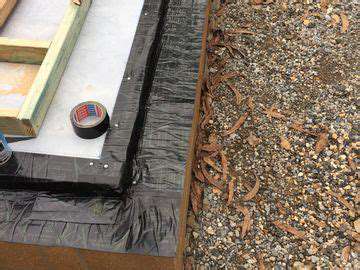Storing Herbs and Spices: Maximize Potency
Temperature Control for Optimal Storage
Keeping herbs and spices at the correct temperature is essential for retaining their vibrant flavors and aromas. Excessive heat speeds up the breakdown of delicate compounds, resulting in bland, lackluster seasonings. For best results, store them in a consistently cool, dry location—preferably under 70°F (21°C). Avoid placing containers near appliances that generate heat, such as ovens or stovetops, as temperature swings can degrade quality faster.
While refrigeration might seem like a logical choice, it's often counterproductive for spices. The cold environment can introduce moisture, creating ideal conditions for mold growth. Fresh herbs may fare slightly better in the fridge for brief periods, but they'll still lose their characteristic freshness rapidly. Tailoring storage methods to each herb and spice variety yields the best long-term results.
Light's Impact on Flavor and Color
Sunlight acts as a silent thief, steadily robbing herbs and spices of their essential oils and vivid hues. This photodegradation process diminishes both flavor intensity and visual appeal. Opaque, airtight containers stored in dark spaces provide the best defense against light-induced deterioration. Avoid transparent jars on open shelves or near windows where sunlight can reach them throughout the day.
Different seasonings show varying sensitivity to light exposure. Vibrantly colored spices like turmeric and paprika fade noticeably when left in bright conditions, while delicate herbs like basil and parsley lose their aromatic oils more quickly. These variations should guide your storage decisions for maximum preservation.
Importance of Proper Light and Air Circulation
A well-ventilated storage area prevents the twin threats of mold and mustiness. Herbs and spices act like miniature sponges, absorbing ambient moisture that can lead to spoilage. Choosing a dry, airy pantry or cabinet—far from steamy kitchens or humid basements—creates an ideal microenvironment for preservation.
While allowing air movement in the storage area, individual containers should seal tightly against external humidity. This dual approach of overall ventilation with container-level protection offers the best of both worlds—preventing stagnation while blocking moisture intrusion. Investing in quality airtight containers pays dividends in extended shelf life and maintained flavor profiles.
Mastering these environmental factors transforms how your herbs and spices perform in cooking, ensuring they deliver their full potential with every use.
Protecting Against Moisture and Pests

Protecting Against Moisture
Uncontrolled moisture wreaks havoc on building materials, causing structural weaknesses and creating breeding grounds for mold. Both external water intrusion and internal humidity contribute to these issues. Proactive moisture management saves homeowners from expensive repairs and preserves property value over time. Effective solutions range from improved ventilation systems to strategic use of water-resistant construction materials.
Preventing Peeling Paint
When paint begins peeling, it's often signaling deeper moisture problems beneath the surface. This separation occurs when water infiltrates the substrate, breaking the bond between paint layers. Simply repainting without solving the underlying moisture issue leads to recurring problems. Specialized moisture barriers and proper surface preparation create lasting solutions that maintain both appearance and protection.
Exterior Moisture Barriers
A building's exterior faces constant assault from weather elements. High-quality moisture barriers applied during construction or renovation form the first line of defense. These systems work best when combined with proper flashing details and sealed penetrations. Customizing barrier systems to local climate conditions ensures optimal performance year-round. Regular inspections help identify wear before leaks develop.
Interior Moisture Control
Daily activities like cooking and bathing generate surprising amounts of indoor humidity. Without proper management, this moisture condenses on cool surfaces, leading to material degradation. Strategic placement of exhaust fans and proper HVAC system operation maintain healthy humidity levels. In humid climates, supplemental dehumidification may prove necessary to protect interior finishes.
Professional Inspections and Maintenance
Seasonal inspections by qualified professionals catch small issues before they become major expenses. These experts use specialized tools to detect hidden moisture that untrained eyes might miss. Establishing a routine maintenance schedule extends building lifespan and prevents costly emergency repairs. Documentation of inspection findings helps track changes over time.
Choosing Moisture-Resistant Materials
Modern building science offers innovative materials designed to withstand moisture challenges. From mold-resistant drywall to waterproof membrane systems, these products provide built-in protection. While sometimes costing more initially, moisture-resistant materials typically offer superior long-term value. Their use significantly reduces maintenance requirements and repair frequency in moisture-prone areas.

- Authentic Greek Salads: Fresh and Flavorful
- Pantry Organization Hacks: Declutter Your Kitchen
- Baking with Kids: Fun & Simple Cookie Decorating
- Cooking with Spices: A Beginner's Flavor Guide
- Gluten Free Bread Baking: Soft, Chewy, and Delicious
- How to Store Eggs for Maximum Freshness
- Vegetarian Dinner Party Ideas: Impress Your Guests
- Meal Planning for Beginners: Your First Week of Easy Meals
- Baking Bread Machine Recipes: Effortless Baking
- Sustainable Grocery Shopping: Eco Friendly Choices
- Healthy Breakfast Bowls: Customizable and Nutritious
- How to Store Onions and Garlic: Proper Ventilation